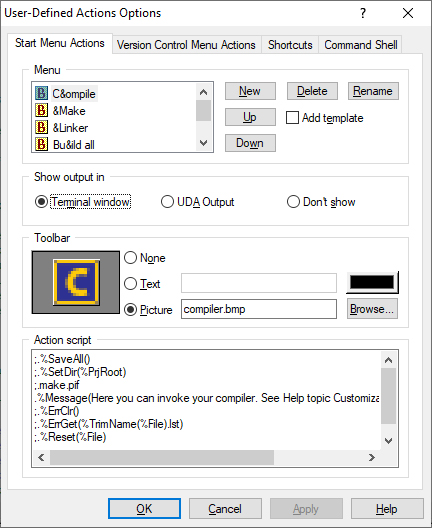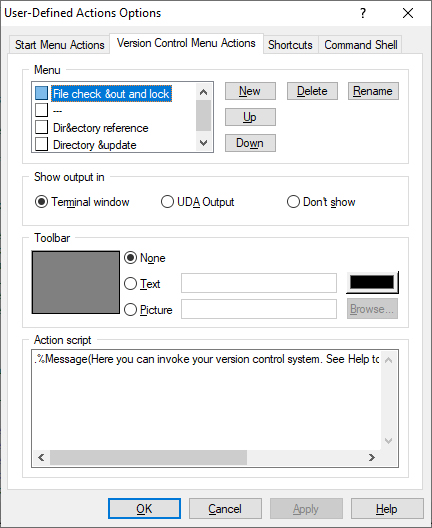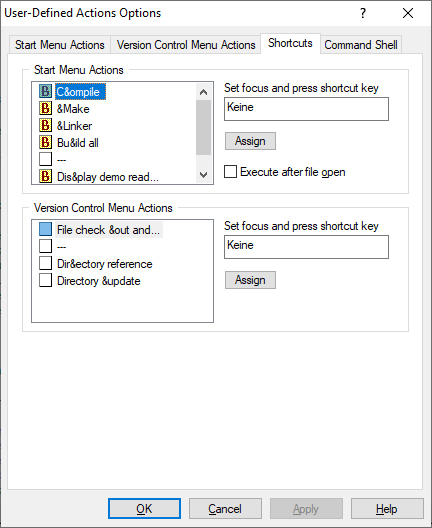Start Menu Actions
In "Menu" commands list, inserting "
&" in front of a character within the name defines an access key. To add a separator, put "---" for Action name on the menu.New
Creates new actions and separators.
Delete
Deletes the selected action or separator.
Rename
Changes the name of the selected action.
Up
Moves selected action up.
Down
Moves selected action down.
Add template
Specifies whether or not particular actions were taken from the User-Defined Action template that comes with DA-C.
Show output in
Terminal window: Opens Terminal window for output
User-Defined Actions Output: Redirects output to User-Defined Actions Output tab.
Don't show: Ignores output for action
Toolbar
Displays the toolbar button corresponding to the selected action.
NNone, Text, Picture
Enables you to choose whether text, buttons or nothing will be displayed on the toolbar. If you select "Picture", note that the best results will be obtained using 20*20 pixel bitmaps drawn in the default 16 color palette. The default folder for BMP's is called BITMAP, and is located either in the same folder as the PROGRAM folder, or in the project root directory. Should you choose "Picture", icons built into a suitable program called by means of UDA can also be used as pictures (icons are built into .exe or .dll, all you have to do is to point at .exe or .dll).
Browse
Enables you to select the bitmap that will appear on the toolbar button for the selected User-Defined Action.
Action Script
One or more executable lines with external programs and macro-substitutions





 Copyright © 1993-2022, RistanCASE PR
Copyright © 1993-2022, RistanCASE PR